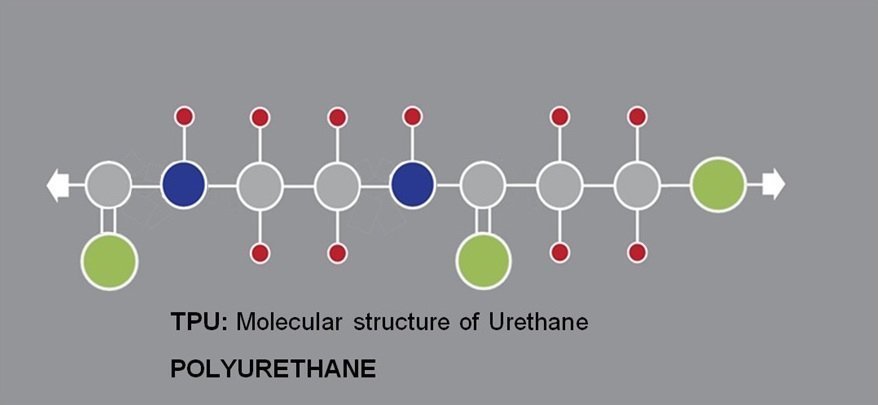TPU
TPU stands for Thermoplastic Polyurethane. In Persian, it is called polyurethane plastic

TPU - thermoplastic polyurethane
TPU stands for Thermoplastic Polyurethane. In Persian, it is called polyurethane plastic. In 1959, it was extracted from the composition of plastic materials by BF Goodrich. The main color of this material is black. Due to its characteristics, this substance has various uses in the industry.
Their advantages include good anti-wear properties, resistance to corrosion and tearing, and compatibility with mineral hydraulic oil and petroleum base , and their disadvantages are lack of compatibility with acidic, hot water, and alkaline items.
Thermoplastic polyurethane or Polyurethane (Poly Urethane) is a group of chemicals that is made from the reaction of polyols and isocyanates as its main ingredients. TPUs were first discovered in 1937 and after that they played a very important role in various industries of the world.
History
The TPU production method was discovered for the first time by Otterbayer in Germany in 1973, and after that these materials were introduced in various global industries due to their unique properties. The first polyurethane was produced from diisocyanate reaction. Allitanes are compounds that have a urethane bond in their structure. In fact, polyurethane or PU is the general name of all polymers that have a urethane bond.
Features TPU
- Extremely high adhesion with all types of surfaces
- No threading in vertical seams
- Maintaining flexibility in a very wide range
- Non-toxic and approved for use near drinking water
- High resistance to corrosive agents
- Less cost and very light weight
- Easy transportation and ability to pass construction equipment
- Repairability and low water absorption
- No discoloration and cracking over time
- High and fast lighting and coloring ability
- Quick and easy installation in the shortest possible time
- High insulating power
- The low price of thermoplastic polyurethane granules
- No release of toxic gas during fire
